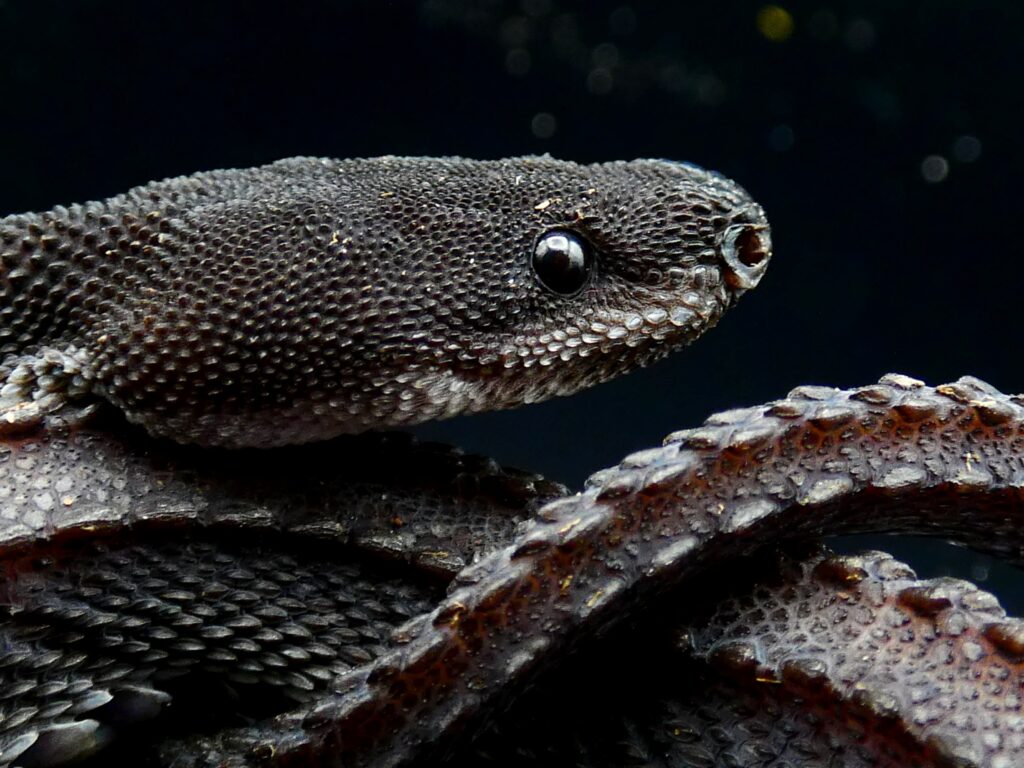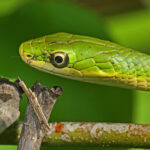Do you want to learn how to care for a unique and rare creature that resembles a dragon? Look no further than the dragon snake. These snakes, also known as Javan tubercle snakes or rough-backed litter snakes, are native to Southeast Asia and are marked with distinct features that make them stand out from other snake species.
While they may be challenging to care for, with the right conditions and knowledge, you can provide them with a healthy and fulfilling life in captivity.
In this comprehensive guide, you will learn everything you need to know about dragon snake care, including their habitat, diet, and health. We’ll cover their unique characteristics and behavior, as well as the specific requirements for their environment, such as temperature, lighting, and substrate.
Additionally, we’ll explore their dietary needs and health concerns, so you can ensure your dragon snake stays healthy and happy. Whether you’re a new or experienced reptile owner, this guide will provide you with the knowledge and tools you need to provide exceptional care for your dragon snake.
Table of Contents
Key Takeaways
- Dragon snakes belong to the family Xenodermus and are also known as Javan tubercle snakes or rough-backed litter snakes.
- They require stringent conditions to thrive in captivity, including a high humidity level of 85-95 percent and a consistent source of clean and fresh water.
- Dragon snakes mainly feed on tadpoles, frogs, and small fish, and are voracious eaters that must be limited in their food intake.
- Common health problems for dragon snakes include skin irritations, obesity, and sensitivity to heat, and it’s important to keep their enclosure clean to avoid these issues.
Dragon Snake Care: Facts and Features

You may be interested to know that Dragon Snakes are a rare and fascinating species that belong to the family Xenodermus. They’re also known as Javan tubercle snakes or rough-backed litter snakes and have marked features of a dragon.
These nocturnal snakes mainly feed on frogs, tadpoles, and small fish. They lay about four eggs per year during the rainy season. Breeding is an important aspect of Dragon Snake behavior, and they require stringent conditions to thrive in captivity.
It’s important to note that these snakes don’t take kindly to excessive handling and prefer a quiet area during the day to rest. They also require a consistent source of clean and fresh water, and a high humidity level of 85-95 percent in their enclosure to shed.
If you’re considering adopting a Dragon Snake, it’s important to do extensive research and ensure you can provide the necessary care for these unique creatures.
Habitat and Care Tips
To ensure that your pet dragon snake remains healthy and happy, it’s crucial to provide them with the right enclosure requirements. Keep their enclosure between 72-77 degrees Fahrenheit and maintain a humidity level of 85-95 percent.
Dragon snakes require a substrate like sphagnum moss and a consistent source of clean and fresh water. They prefer a quiet area during the day to rest and drink water from a dish. It’s important to avoid stressing them, so don’t take kindly to excessive handling. They also don’t require a hot spot in their enclosure, but do need a humid environment to shed.
Dragon snakes are a bit difficult to keep in captivity, so it’s important to provide them with stringent conditions to thrive. Regular handling can help overcome their shyness, but avoid handling them excessively to prevent stress.
Enclosures should be kept clean to avoid skin irritations and maintain the snake’s health. If you notice signs of illness, contact a vet immediately. Providing your pet dragon snake with a healthy and comfortable environment will help them live up to their full potential.
Dragon Snake: Feeding and Health Concerns
If you want your dragon snake to live a long and healthy life, it’s crucial to provide them with the right diet. While they mainly feed on tadpoles, frogs, and small fish, it’s essential to limit their food intake to prevent obesity. Feeding them too much can lead to health problems like heart disease and joint pain. As voracious eaters, they need to be fed in moderation.
In addition to preventing obesity, parasite prevention is also crucial for your dragon snake’s health. Parasites are a significant concern for their health, and it’s vital to keep the enclosure clean to avoid skin irritations and other health issues.
Regular handling can help overcome their shyness, but avoid handling them excessively to prevent stress. If you notice signs of illness, contact a vet immediately to prevent further complications.
By providing your dragon snake with a balanced diet and taking necessary precautions, you can help ensure that they live a long and healthy life.
Frequently Asked Questions
Are dragon snakes good for beginners?
Dragon snakes are not recommended as best first-time pets due to their specific needs and difficulty in captivity. Pros include their non-aggressive nature and unique appearance, while cons include their sensitivity to stress and parasites.
How do dragon snakes react to being handled?
You may be curious about handling dragon snakes, but it’s important to note that they don’t take kindly to excessive handling. Proper handling techniques can reduce potential risks such as stress and skin irritations.
What is the lifespan of a wild dragon snake?
The wild dragon snake can live up to seven years in captivity, but their lifespan in the wild is not well documented. Environmental factors such as habitat destruction and hunting may affect their lifespan.
Can dragon snakes be housed with other reptiles?
Dragon snakes should not be housed with other reptiles due to compatibility concerns. They are solitary animals and can become aggressive towards other snakes. Communal housing offers no benefits and can lead to stress and health problems.
Do dragon snakes have any cultural significance in their native countries?
Dragon snakes hold cultural significance in their native countries, with some communities associating them with wealth, fertility, and good luck. They are featured in dragon snake festivals, where they are paraded around in colorful costumes and celebrated for their unique markings and mythical qualities.
Conclusion
Congratulations! You’re now equipped to provide optimal care for your dragon snake. Remember to provide them with a spacious and secure enclosure with plenty of hiding spots, a temperature gradient, and appropriate substrate.
When it comes to feeding, offer them a diet of live or thawed frozen frogs and make sure to monitor their weight and health regularly. If you notice any signs of illness, such as respiratory infections or parasites, seek veterinary care immediately.
With proper care and attention, your dragon snake can thrive for years to come. So go ahead and enjoy the fascinating presence of this unique and captivating creature in your home.




